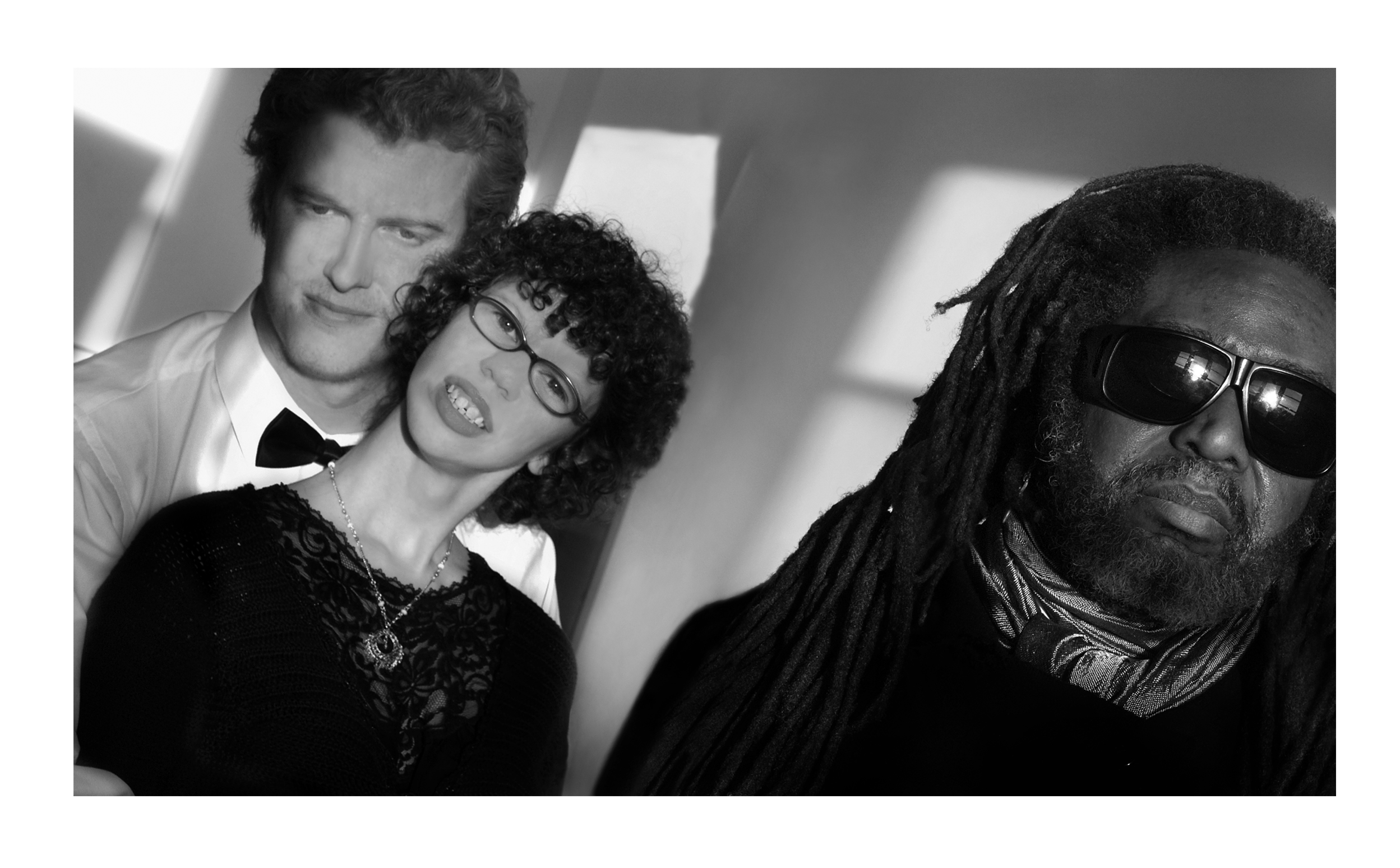Global Trauma, Global Healing: An Interview with Kevin Kling and Interact Center’s Jeanne Calvit
Dean J. Seal chats with acclaimed writer and storyteller Kevin Kling and Interact Center's Jeanne Calvit on their recent multinational collaborative performance in Australia and about the healing power of being "contrary."




Kevin Kling’s recent work, for NPR and his book The Dog Says How, has all been high-profile. But his work with The Interact Center for Visual and Performing Arts has been Down Under the radar (so to speak).
Jeannie Calvit is the artistic director of Interact, which has an art studio and theater company that develops the skills of people with disabilities. Calvit is an innovator and revolutionary in the field. The performing arts wing of the center has produced memorable shows that have toured to London, Norway, Sweden, British Columbia, and Australia.
Recently, Calvit asked Kling to join forces with Interact for a collaborative project involving allies she’d corralled both at home and in Australia; the ambitious plan involved bringing together performers with disabilities, Minnesota Native American artists, and Australian aboriginal performers. As it happens, Kling had worked with Calvit and company before his near-fatal motorcycle accident in August 2001. As you’d expect, his recovery process resulted in a significant, more contemplative redirection in his work.
Through Calvit’s ministrations and Kling’s new inspirations, The Interact Center and Australia’s Tutti Ensemble recently completed a show together, Northern Lights, Southern Cross, which played at the Adelaide Fringe Festival in Australia.
In a conversation over tuna burgers and malts at Joe’s Garage, Kevin Kling, Jeanne Calvit, and I plumbed the depths of the topics raised by this one-of-a-kind show they just finished together in Australia. We talked about the underlying spirituality that connects people who have survived trauma—whether the injury is personal, tribal, or global.
Dean J. Seal: Did the show come out of your hospital experience?
Kevin Kling: You know what? No, it began long before this. For me, the jumping off point was when the Australians came to Minnesota, and we all went dog sledding. There were eleven performers with disabilities, the staff from the Tutti Ensemble came, and we all went up North. That was amazing; we went ice fishing, and that’s where we met Al Baker [a Native American medicine man] and got connected with the Native community here. Then, all of a sudden, we got the idea: how do indigenous cultures tie in with cultures with people with disabilities, and with survival? Then Sindebad [a Minneapolis artist] and I went to Australia last year, and they did to us what we did to them. They took us to the Outback and we really got to know the members of their indigenous community. Jeannie [Calvit] and Pat Rix brought [the Australian indigenous communities and the Minnesota Native American communities] together. Then [as we discussed the play] we sent ideas back to Pat, who composed the music.
Jeannie Calvit: Pat [Rix] is our main collaborator, and she’s a composer. She’s the mover and shaker. We [at Interact] wanted to do it, and the Obijwe wanted to do a real co-production that involved our two companies. I was thinking about things we have in common as two cultures: we were settled by white people who almost destroyed our indigenous people, and I feel that there is some underlying spirituality that’s still left over from them. I felt like that sad aspect of our two cultures was interesting.
Seal: When did you add the idea of the global and personal trauma?
Kling: That was something that I noticed connected all these communities. I thought: What are indigenous people born into? And then, what do people with disabilities deal with, whether they’re born into it, or acquire it? The story [of the play] starts with my motorcycle accident; so in my case, it’s about acquiring a trauma. When you’re in a coma or you’re trying to come out, you end up going epic to survive.
Calvit: I remember the light bulb. Al [Baker] started talking about the Haioka, hai-yo-ka, who were “contrary.” In Native American culture [Haioka, or “contraries”] are spiritual teachers. They do things backwards; they’re annoying. They press your buttons. And suddenly, it reminded me of the kind of clowning I did at the Jacque LeCoque school. [LeCoque is like the Haioka], but he gets away with it because he’s a little bit crazy.
Kling: Like Lear’s Fool.
Seal: He’s got license. Like the court jester who can say the unsayable and not get his head cut off.
Calvit: And so, I thought: ” I know what I’m gonna do! I’m going to create a clown chorus with these disabled artists.”
Kling: Acknowledging both that [if you experience trauma] you are a “contrary”, and that there are “contraries” that you can learn from—whether it’s Haioka, or Fool, or whatever you want to call it—you can learn from people who have a foot in two worlds. They help you look at this world through their prism, and by doing that, you can turn and look at the world you live in. One of the things that Haiokas, “contraries,” or people with disabilities have to offer is the ability to turn and look at a parallel universe [seeing the world anew through their experience].
Calvit: In the play, there’s a woman who meets (Kling), and she tells him, “Don’t ride your motorcycle!” Of course, he does ride his motorcycle, has the accident, and goes into a coma. When he’s over in the other world [after he becomes comatose], he meets up with a bunch of Aboriginal and Native American guides.
Kling: I think the main part of the show has less to do with the fact that we experience trauma than with how you heal from trauma. The two ways I found that you heal: having a sense of humor and having knowledge of self. Knowledge of self comes from tradition and stories, and knowing where you come from. That concerns me a bit about America, because I think our kids are born into trauma now, from 9/11. And they’re going to need these two things. [One thing I noticed] about the indigenous cultures—the survivors are all hilarious. And they have a strong knowledge of self: many of them are still steeped in the traditional methods [of ceremony and spirituality].
Seal: In my chaplaincy training, one of the things they talk about is that doctors are about curing, nurses are about curing and healing, and chaplains are about healing. Healing can happen even as someone is dying. You can still heal relationships, heal your soul.
Calvit: That was also a big thing about this play—you can’t cure a disability, but you can heal it. You can’t cure trauma, but you can heal it! Seal: ….but healing takes on a whole, new meaning when you’re not talking about curing.
Kling: It’s not about that!
Calvit: There’s this beautiful bit at the end of the Northern Lights, Southern Cross. Kevin goes into coma, he develops a fever, and the doctor doesn’t think he’s going to live. There’s a metaphor for the Windigo in the play [note: the Windigo is an Ojibwe mythical figure that devours everything]; and the mystical thing is that the Windigo comes to take Kevin away when he’s feverish, but then Larry Yazzie, the fancy dancer, performs an incantation that gets rid of the Windigo. [After that] Kevin is sent back to Minnesota and, at the very end of the play, he’s standing there: [we’re presented with] Northern Lights, heavenly music, and then the clown chorus and the leader of the clowns come on stage to greet him. Kevin says, “I came back, but I’m not the same person that left. I’m a Haioka, now.” And then all of the clown chorus comes over and puts their arms around him. [It was] so hugely moving. (pause) It was hard coming back to reality, to work [after that].
Kling: It was crazy to let it go!
Calvit: And we weren’t the only ones who felt it. The people in the choir, the audience… I think everybody felt it.
You have a rare opportunity to see these two theatrical companies working together for yourself, right here in Minnesota. Australia’s Tutti Ensemble has come to Minneapolis for a joint production with the Interact Center on stage at the Mixed Blood Theatre: Between the Worlds is a send-up to the Romeo and Juliet tale featuring the talents of acclaimed actor J. Otis Powell, a cast of 45, with original music composed by Tutti’s director, Pat Rix, and under the direction of Interact’s Jeanne Calvit. You can see Between the Worlds through December 21. (Look for an American staging of Northern Lights, Southern Cross, which will bring Kevin Kling, Jeanne Calvit, Interact and the Australian Tutti Ensemble together again to perform the play discussed above, sometime in late 2008 or 2009.)
About the writer: Dean J. Seal is a writer and performer, who ran the Minnesota Fringe Festival for four years, during which it became the largest in the nation. He’s also a key player behind the scenes of Manna Fest, and is mnartists.org’s spiritual theater correspondent.
What: Between the Worlds presented by Interact Theatre and Australia’s Tutti Ensemble
Where: Mixed Blood Theatre, Minneapolis, MN
When: Performances run through December 21.
Tickets: $10-$16